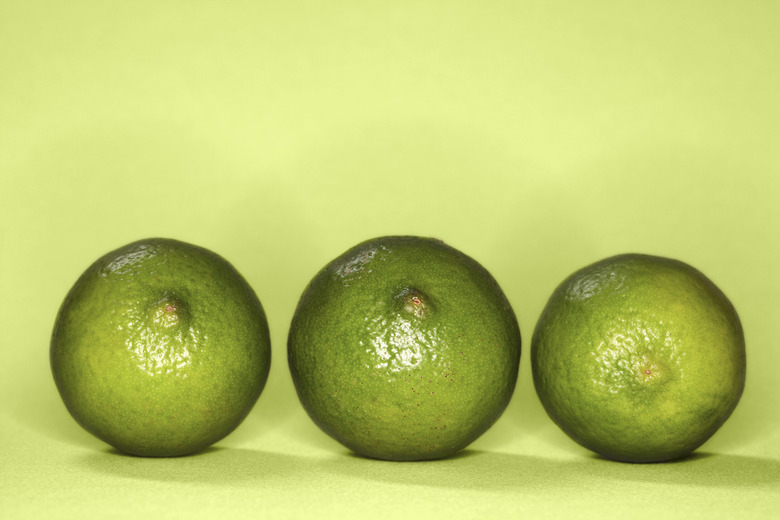How To Make A Citrate Buffer
Things Needed
- Citric acid
- Sodium citrate
- Water
- Stirrer
- pH meter
Citric acid is an organic acid commonly present in citrus fruits, but also in various animals and bacteria. A buffer consists of a combination of an acid along with its conjugate base or a base along with a conjugate acid. Buffer solutions help in maintaining the pH of the solution at a near constant value in numerous biochemical experiments. Citrate buffer is made by mixing citric acid along with its conjugate base, sodium citrate. The pH of a citrate buffer generally varies from 1.2 to 6.6.
Step 1
Calculate the quantity of citric acid and sodium citrate required for you to make the buffer by using an online "Citric acid buffer calculator." For example, a buffer with pH 4 requires 1.3g/liter of citric acid and 1.1g/liter of sodium citrate.
Step 2
Add the calculated amounts of sodium citrate and citric acid to 1 liter of water and stir it with a stirrer until both are fully dissolved.
Step 3
Use a pH meter to check the pH of the solution.
Step 4
Add a few drops of citric acid if the pH of the solution is higher than desired, or add a few drops of sodium citrate if it's lower than desired.
TL;DR (Too Long; Didn't Read)
Handle the acid with care, as it may be harmful if inhaled or spilled onto your clothes or body parts.
Cite This Article
MLA
Dutta, Indrajit. "How To Make A Citrate Buffer" sciencing.com, https://www.sciencing.com/how-10015828-make-citrate-buffer/. 7 August 2017.
APA
Dutta, Indrajit. (2017, August 7). How To Make A Citrate Buffer. sciencing.com. Retrieved from https://www.sciencing.com/how-10015828-make-citrate-buffer/
Chicago
Dutta, Indrajit. How To Make A Citrate Buffer last modified March 24, 2022. https://www.sciencing.com/how-10015828-make-citrate-buffer/
